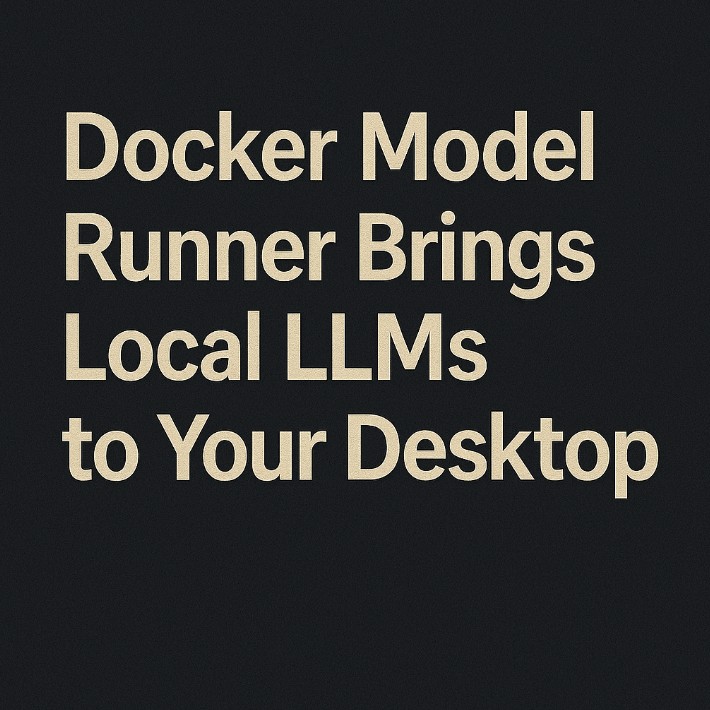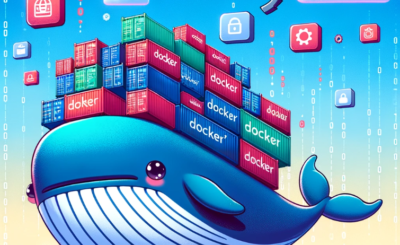The rise of Large Language Models (LLMs) has revolutionized the field of artificial intelligence. However, accessing and utilizing these powerful models often requires significant computational resources and expertise. This is where Docker Model Runner steps in, offering a revolutionary solution by bringing the power of local LLMs to your desktop, regardless of your operating system.
This comprehensive guide delves into the capabilities of Docker Model Runner, providing a detailed understanding for DevOps engineers, cloud engineers, data scientists, and anyone interested in leveraging the power of LLMs without the complexities of cloud infrastructure.
Table of Contents
- 1 Understanding Docker Model Runner and Local LLMs
- 2 Setting Up Docker Model Runner
- 3 Advanced Usage of Docker Model Runner
- 4 Use Cases & Examples
- 5 Frequently Asked Questions (FAQ)
- 5.1 Q1: What are the hardware requirements for running LLMs locally with Docker Model Runner?
- 5.2 Q2: Can I use Docker Model Runner with different operating systems?
- 5.3 Q3: How do I ensure the security of my data when running LLMs locally with Docker?
- 5.4 Q4: What happens if my Docker container crashes?
- 5.5 Q5: Are there any limitations to using Docker Model Runner for LLMs?
- 6 Conclusion
Understanding Docker Model Runner and Local LLMs
Docker Model Runner is a powerful tool that simplifies the process of running LLMs locally. It leverages the efficiency and portability of Docker containers to encapsulate the model, its dependencies, and the runtime environment. This means you can run sophisticated LLMs on your personal computer, without the need for complex installations or configurations. This approach offers several key advantages, including:
- Enhanced Privacy: Process your data locally, eliminating the need to send sensitive information to external cloud services.
- Reduced Latency: Experience significantly faster response times compared to using cloud-based LLMs, especially beneficial for interactive applications.
- Cost-Effectiveness: Avoid the recurring costs associated with cloud computing resources.
- Improved Control: Maintain complete control over your environment and the models you utilize.
- Portability: Run your LLM on different machines with ease, thanks to the containerized nature of Docker Model Runner.
Setting Up Docker Model Runner
Prerequisites
Before you begin, ensure you have the following prerequisites installed on your system:
- Docker: Download and install the latest version of Docker Desktop for your operating system from the official Docker website. https://www.docker.com/
- Docker Compose (Optional but Recommended): Docker Compose simplifies the management of multi-container Docker applications. Install it using your system’s package manager (e.g.,
apt-get install docker-composeon Debian/Ubuntu).
Installing and Running a Sample Model
The process of running an LLM using Docker Model Runner typically involves pulling a pre-built Docker image from a repository (like Docker Hub) or building your own. Let’s illustrate with a simple example using a hypothetical LLM image:
1. Pull the Image:
docker pull example-llm:latest2. Run the Container: (Replace /path/to/your/data with the actual path)
docker run -it -v /path/to/your/data:/data example-llm:latestThis command pulls the example-llm image and runs it in interactive mode (-it). The -v flag mounts a local directory as a volume within the container, enabling data exchange between your host machine and the LLM.
Note: Replace example-llm:latest with the actual name and tag of the LLM image you want to run. Many pre-built images are available on Docker Hub, often optimized for specific LLMs. Always consult the documentation for the specific LLM and its Docker image for detailed instructions.
Advanced Usage of Docker Model Runner
Utilizing Docker Compose for Orchestration
For more complex scenarios involving multiple containers or services (e.g., a database for storing LLM data), Docker Compose provides a streamlined approach. A docker-compose.yml file can define the services and their dependencies, making setup and management much easier.
Example docker-compose.yml:
version: "3.9"
services:
llm:
image: example-llm:latest
volumes:
- ./data:/data
database:
image: postgres:14
ports:
- "5432:5432"
environment:
- POSTGRES_USER=myuser
- POSTGRES_PASSWORD=mypassword
To run this setup, execute:
docker-compose up -dCustomizing Docker Images for Specific LLMs
You can tailor Docker images to optimize performance for specific LLMs. This might involve:
- Optimizing base images: Choosing a lightweight base image to reduce container size and improve startup time.
- Installing necessary libraries: Including any required Python packages, CUDA drivers (for GPU acceleration), or other dependencies.
- Configuring environment variables: Setting environment variables to control the LLM’s behavior.
Use Cases & Examples
Basic Use Case: Running a Sentiment Analysis Model
Suppose you have a sentiment analysis LLM. Using Docker Model Runner, you can run this model locally to analyze text data from a file without sending it to a cloud service. This ensures privacy and reduces latency.
Advanced Use Case: Building a Real-time Chatbot
Integrate an LLM within a custom chatbot application. Docker Model Runner can run the LLM efficiently, handling user queries and generating responses in real-time. This allows for faster response times and improved user experience compared to cloud-based solutions.
Frequently Asked Questions (FAQ)
Q1: What are the hardware requirements for running LLMs locally with Docker Model Runner?
The hardware requirements vary significantly depending on the size and complexity of the LLM. Smaller models might run on modest hardware, but larger LLMs often demand powerful CPUs, substantial RAM (e.g., 16GB or more), and possibly a dedicated GPU for optimal performance. Always check the LLM’s documentation for its recommended specifications.
Q2: Can I use Docker Model Runner with different operating systems?
Yes, Docker’s cross-platform compatibility means you can use Docker Model Runner on Linux, Windows, and macOS, provided you have Docker Desktop installed.
Q3: How do I ensure the security of my data when running LLMs locally with Docker?
Security practices remain crucial even with local deployments. Utilize Docker’s security features, regularly update your Docker images, and ensure your host operating system is patched against vulnerabilities. Consider using Docker security scanning tools to detect potential vulnerabilities in your images.
Q4: What happens if my Docker container crashes?
Docker offers various mechanisms to handle container failures, such as restart policies. You can configure your Docker containers to automatically restart if they crash, ensuring continuous operation. You can specify the restart policy in your docker run command or in your docker-compose.yml file.
Q5: Are there any limitations to using Docker Model Runner for LLMs?
While Docker Model Runner offers many advantages, there are limitations. Very large LLMs might exceed the resources of a typical desktop computer. Also, managing updates and maintaining the model’s performance might require technical expertise.

Conclusion
Docker Model Runner significantly simplifies the process of deploying and running LLMs locally, offering several benefits over cloud-based alternatives. Its ease of use, coupled with the security and performance advantages of local processing, makes it an attractive option for a wide range of users. By following the guidelines and best practices outlined in this guide, you can effectively leverage the power of LLMs on your desktop, unlocking new possibilities for your projects and workflows. Remember to always consult the documentation for the specific LLM and its Docker image for the most accurate and up-to-date information. Thank you for reading the DevopsRoles page!
